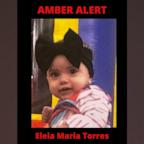How to Fight Germs and Stay Healthy on the Road
Be wary of the airplane lavatory.
— -- Winter is around the corner, and thousands of travelers will endure sneezing seatmates, line up for communal lavatories and touch what the last guest did in hotel rooms.
Several health and disease experts warn of germ-laden spots travelers can expect and offer tips to avoid bacteria and viruses that could make you sick.
Be wary of the airplane lavatory.
With scores using a tiny restroom on a flight, it's "hands-down the germiest place on the trip," says Peter Sheldon, vice president of operations and development for Coverall Health-Based Cleaning System, which franchises commercial cleaning businesses. "Numerous studies have shown that these are teeming with E. coli on almost every surface."
Because they are rarely sanitized during flights, "there is also the cumulative effect of hundreds of users," he says. "The tiny sink makes it nearly impossible to thoroughly wash your hands. Those who manage that are instantly greeted by the germy door handle upon departure."
His Prescription: "Avoid using the onboard facilities, if at all possible. If you must, use a paper towel to turn faucets off and on, to close the lid before flushing and to open the door. Carry sanitizing wipes in your pocket and use them thoroughly upon exit. Back at your seat, repeat sanitizing if you've touched anything along the way."
Physician Aaron E. Glatt, CEO of St. Joseph Hospital in Bethpage, N.Y., and spokesman for the Infectious Disease Society of America, concurs.
Presume an airplane lavatory is "teeming with bacteria," he says. "I suggest you minimize your contact" with anything in it. Such measures as opening the door with a paper towel are "an intelligent thing to do. At the hospital, we shut off (faucets) with a paper towel."
Travelers such as Clint Murray, 74, of Crawfordsville, Ind., follow that advice. He takes an extra step by using "my foot to lower a toilet seat and flush."
Sanitize your seat on a plane.
Cleaning expert Sheldon and his wife pack disinfectant wipes and "wipe down any surface that we're using. I wipe down the seat, armrests and tray tables."
He avoids picking up magazines in seat-back pockets, which he says may harbor germs from previous passengers. Physician Martin Myers, director of the National Network for Immunization Information, uses a sanitizing wipe or washes his hands after reading.
The tray table, Sheldon says, may be rarely scoured and is a hotbed for germs.
Veteran flight attendant Gailen David, whose dearskysteward.com offers tips for travelers, has seen "moms change their babies on the tray table. ... I understand that sometimes moms are put in a pinch." He agrees that "bringing antiseptic wipes is the best way to make (plane surfaces) tolerable."
Protect yourself from sick passengers.
Sometimes, you face situations you can't control -- such as an ailing fellow flier.
Being in an enclosed cabin is "particularly risky for airborne-spread diseases" such as measles, since viral particles can stay in the air for a while, immunization specialist Myers says. Wearing a face mask could help.
Finally, don't rub your eyes or touch your nose or mouth, he says. People tend to do that multiple times an hour; that's how many diseases spread.
Avoid airline pillows and blankets.
"On a typical flight with 100 passengers, statistics show that about five will be ill with a cold or the flu," Sheldon says.




